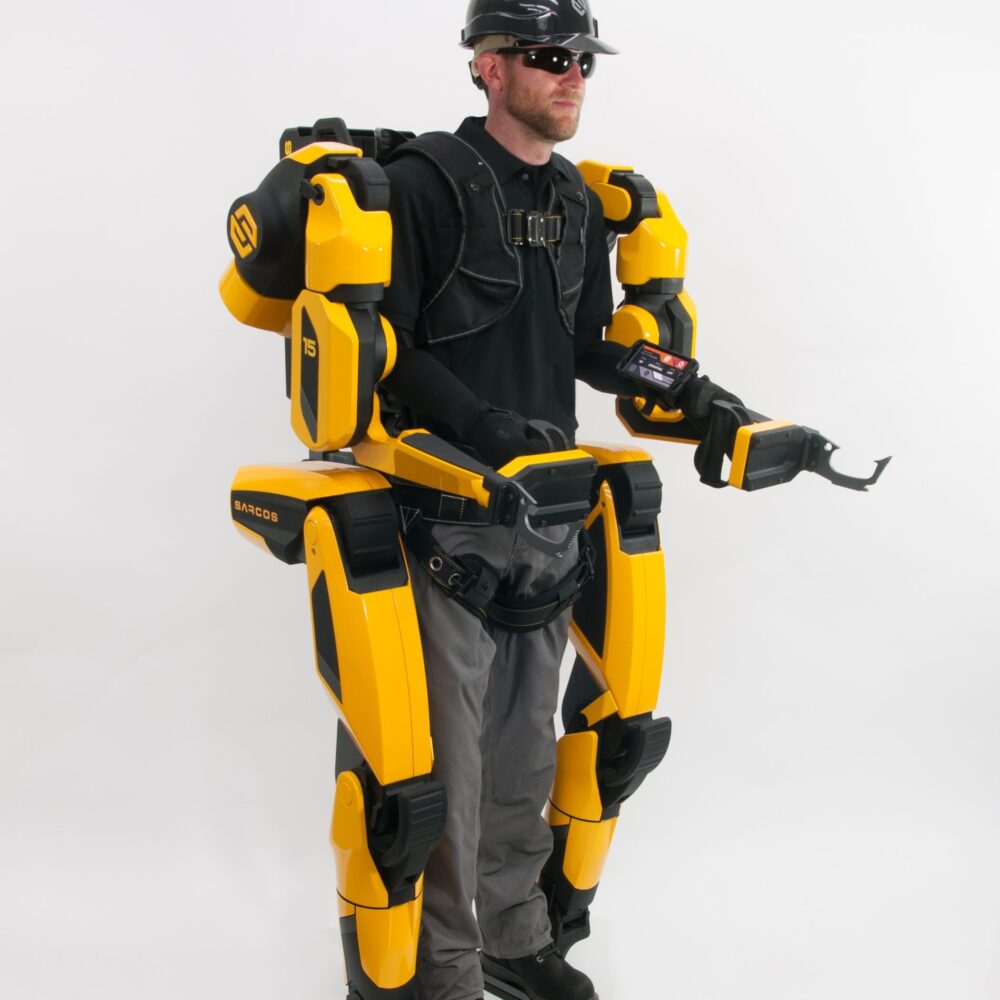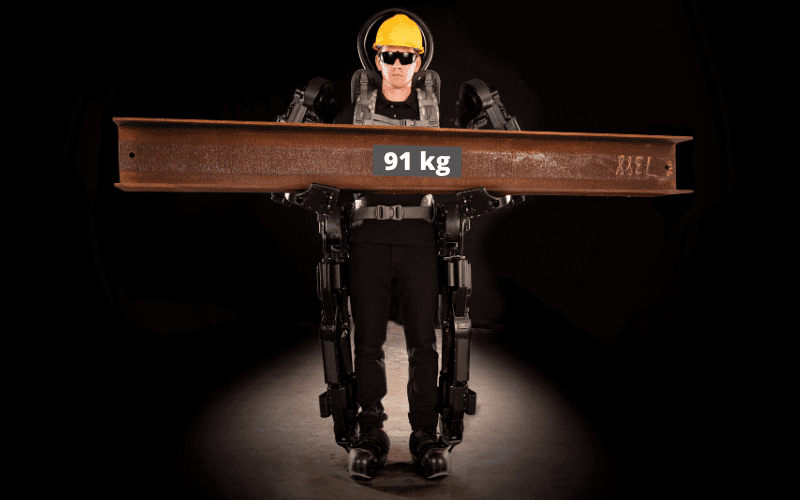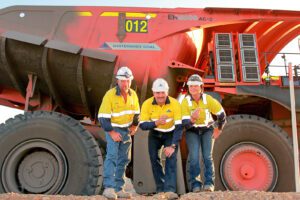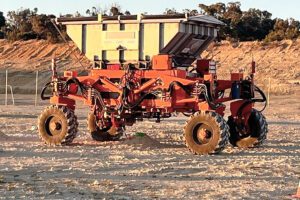A new commercially available exoskeleton could equip miners to safely lift and manipulate weights of up to 90kg all day without risk of injury. While it sounds like a future of mining concept or a scene from an Iron Man movie, the exoskeleton has already been developed and orders have been placed by a US Government agency.
The exoskeleton could safely transform a range of tasks in mining logistics and mine maintenance operations that either require two-person lifts or use of a range of manual handling equipment such as forklifts or small cranes. It seems, on the surface at least, that any task in the mining industry that requires lifting or loading could be transformed through the application of the new exoskeleton.
Designed and manufactured by US robotics company Sarcos, the exoskeleton is a powered, untethered, industrial suit that improves human strength and endurance without restricting the operator’s freedom of movement.
The company says “The Sarcos Guardian® XO® full-body battery-powered exoskeleton is a first-of-its-kind wearable robot that enhances human productivity while keeping workers safe on the job.”

The exoskeleton is based on research and development initially funded by the US Defense Agency DARPA. That funding and development started in 2000 and the product has evolved through the advancement in computing power and materials since that time.
“The exoskeleton enables workers to perform hours of physical activity, including repetitively lifting and manipulating heavy or awkward objects, that would otherwise be impossible for a single human to perform,” the company said.
Could this be the future of mining?
It is capable of repeatedly lifting and manipulating up to 91 kg without fatigue or strain for up to an eight-hour work session. The human operator bears none of the weight of the exoskeleton or its payload, and it can be donned and doffed in under one minute. It also requires minimal operator training because it permits natural, fluid, and intuitive movement.
The exoskeleton operates for up to eight hours on one charge requiring around 400 watts of power while walking at human speed, which represents a 90+ per cent reduction in power typically required for humanoid robots. Additionally, the new robot is designed to allow its battery modules to be “hot-swapped” in the field within seconds without loss of power to the unit.
This control system enables the Guardian XO exoskeleton to respond to the operator’s movements in milliseconds, allowing the operator to intuitively control the robot in a way that leverages their instincts and reflexes and minimizes the need for extensive human training.
The Sarcos company, which has investment from mining equipment manufacturer Caterpillar, says it will offer the robot via a fee-based Robotics-as-a-Service (RaaS) model and it will cost around USD $100K per year. It aims to deliver multiples of an individual employee’s productivity for the cost of a single employee while improving safety and reducing costly workplace injuries.
The company expects the first orders to be delivered in the second half of 2020.
Read more Mining Safety News














Add Comment